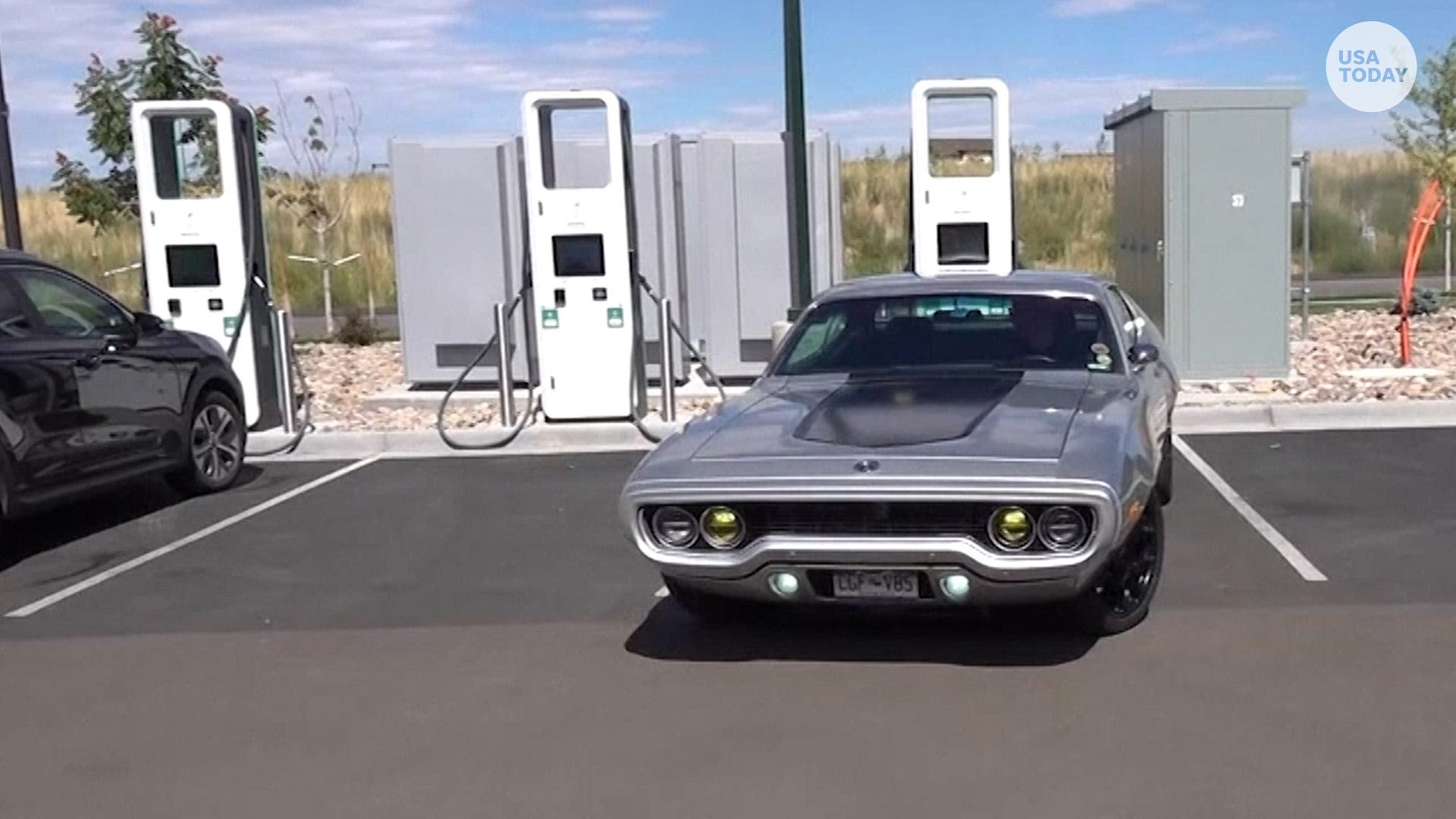

Classic Mustang, Plymouth Satellite and more get electric upgrade
A group of car enthusiasts and tinkerers are turning old sports cars and muscle cars into electric vehicles.
Cody Godwin, USA TODAY
Electric car drivers are getting fed up with public charging.
A new report from J.D. Power found customer satisfaction with public Level 2 charging is down 16 points to 617 on a 1,000-point scale, the lowest level since the study began in 2021. Satisfaction with fast chargers declined even further and is down 20 points to 654.
Brent Gruber, executive director of the EV practice at J.D. Power, warns that low charging satisfaction scores that continue to fall could hinder EV acceptance rates.
“It’s really a cautionary statement – this is not good. And if we keep doing what we’re doing, it’s going to get much worse,” Gruber told USA TODAY.
The study, which surveyed more than 15,000 battery electric vehicle and plug-in hybrid owners during the first half of the year, measures electric vehicle owner satisfaction for Level 2 charging stations (which take four to 10 hours to take an EV from empty to 80% charged) and DC fast charger stations (which take as little as 20 minutes to provide the same amount of charge). The study factors in the ease and speed of charging; the station’s physical condition, availability and convenience of its location; things drivers can do while charging and how safe they feel at the location; the ease of finding the location; and the cost of charging and ease of payment.
Why EV drivers aren’t satisfied with public charging
The U.S. has been expanding its EV infrastructure as part of President Joe Biden’s push for more green energy. Last year, the country installed about 6,300 fast chargers, about three-fourths of which were Tesla Superchargers, according to the International Energy Agency.
Deployment is expected to accelerate in the coming years as the federal government allocates more funding, and more chargers will become accessible to a greater number of drivers as Tesla opens a portion of its network to rival EV models.
Gruber said broader adaptation is partially what’s hurting EV charging satisfaction scores in J.D. Power’s survey. As more drivers shift to electric cars, a greater share of survey respondents may be reporting dissatisfaction as they adjust to the EV charging infrastructure.
“There’s a big learning curve there. And we’re seeing that consumers that are new to EVs have particular issues with the usability,” he said.
How reliable are public EV charging stations? Report shows many EV drivers have issues
Unlike gas stations, which generally offer the same user experience across locations and brands, EV drivers find different payment methods and accessibility across charging networks.
EV drivers say they’re dissatisfied with the amount of time it takes to charge their vehicles and with reliability. J.D. Power’s study found that 20% of users say they visited a charger but did not use it for various reasons, including long lines and broken equipment.
“You have newer owners who are trying to adjust to this new way of owning a vehicle and not necessarily in line with our expectations for how quick charging should be,” Gruber said. “We want it to be fast and we want it to be easy to use. And right now, that’s not the case.”
How Tesla’s Supercharger network could help
Volta ranked highest among Level 2 charging stations with a score of 665, followed by Tesla Destination (661) and ChargePoint (618).
As for DC fast chargers, Tesla Supercharger ranked No. 1 for the third consecutive year with a score of 739. It was the only fast charger to rank above the segment average.
Wednesday’s report notes that Tesla’s decision to open its Supercharger network to non-Tesla owners could make more chargers accessible to more drivers, but it’s not clear whether those drivers will have the same satisfaction scores as Tesla owners.
Unlike Tesla drivers, drivers of other car brands who use Tesla’s charging network will need to connect their car using an adapter. Gruber said there’s little data available because Tesla just this year announced it would open its network to other models in U.S. markets, and it’s not yet clear how satisfied non-Tesla drivers are with the experience.
“You have this connector that basically allows these non-Tesla vehicles to connect to their stations. And that’s not an ideal solution,” Gruber said. “You don’t necessarily want to have to use an adapter. You want it to be a much more seamless process, especially knowing that the ease of charging EVs right now is so poor.”
Gruber noted that problems could be short-lived as automakers move to adopt the same charging hardware and software as Tesla. Ford and General Motors have agreed to integrate Tesla charging technology into their vehicles starting in 2025, meaning drivers won’t need an adapter to connect to Tesla’s Superchargers.
